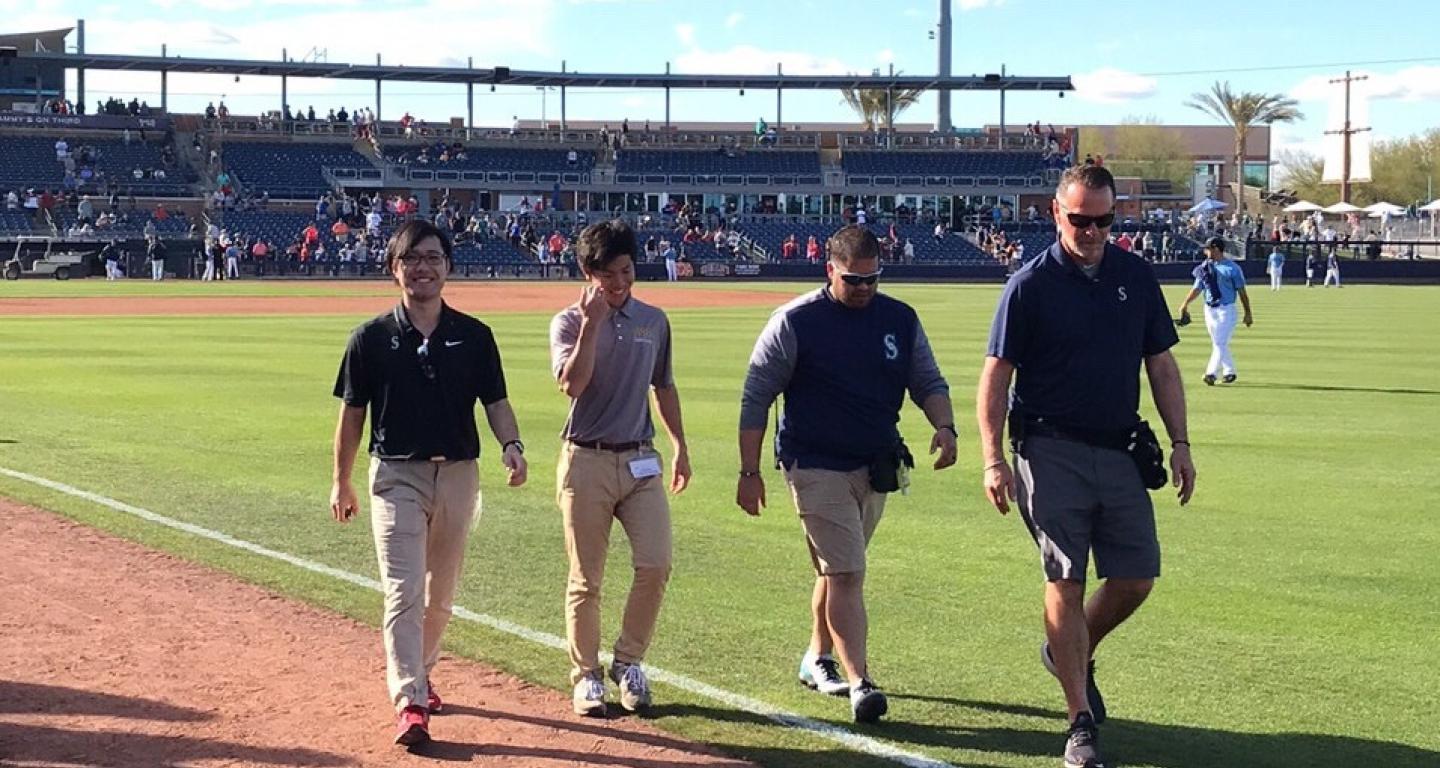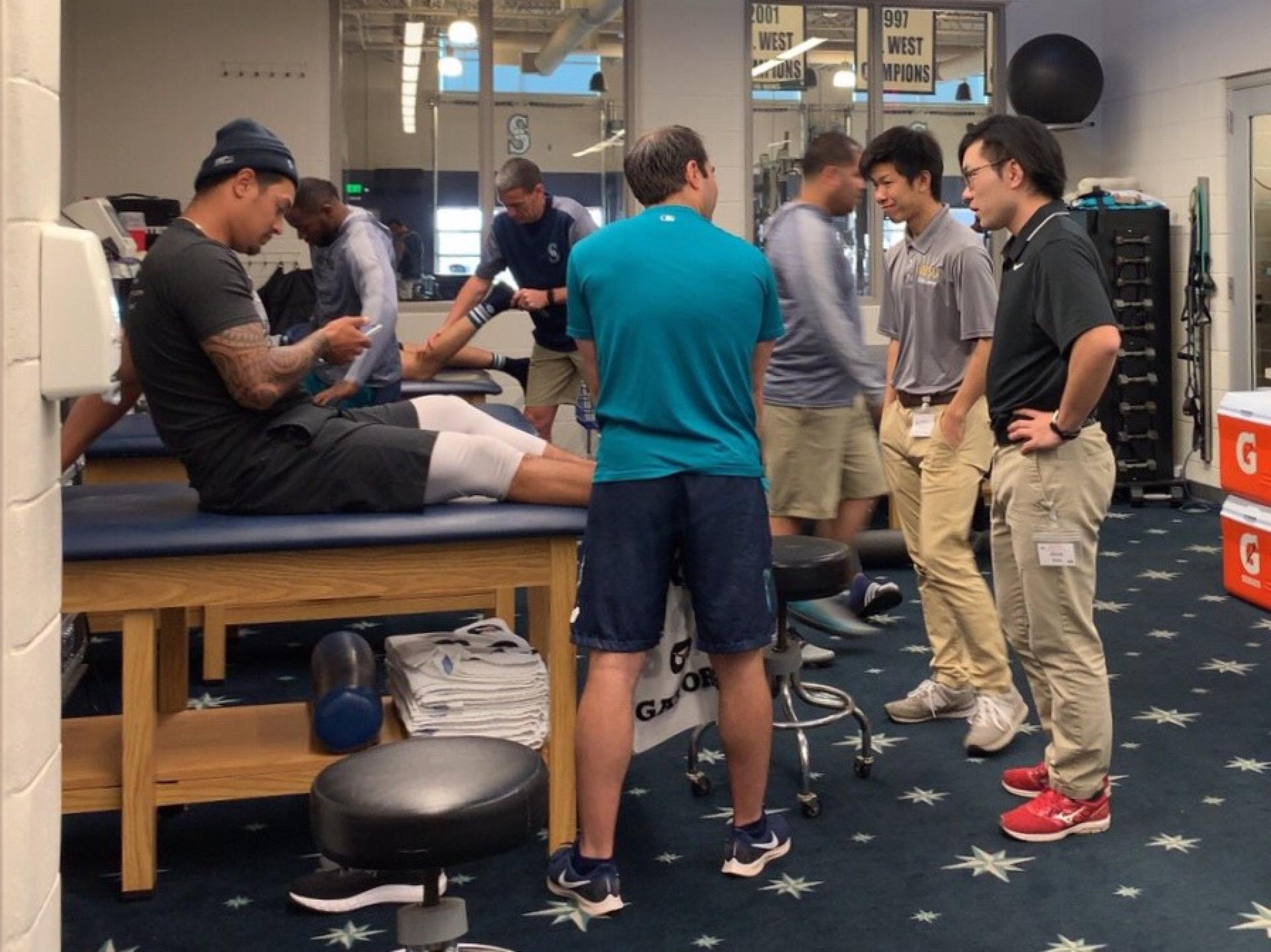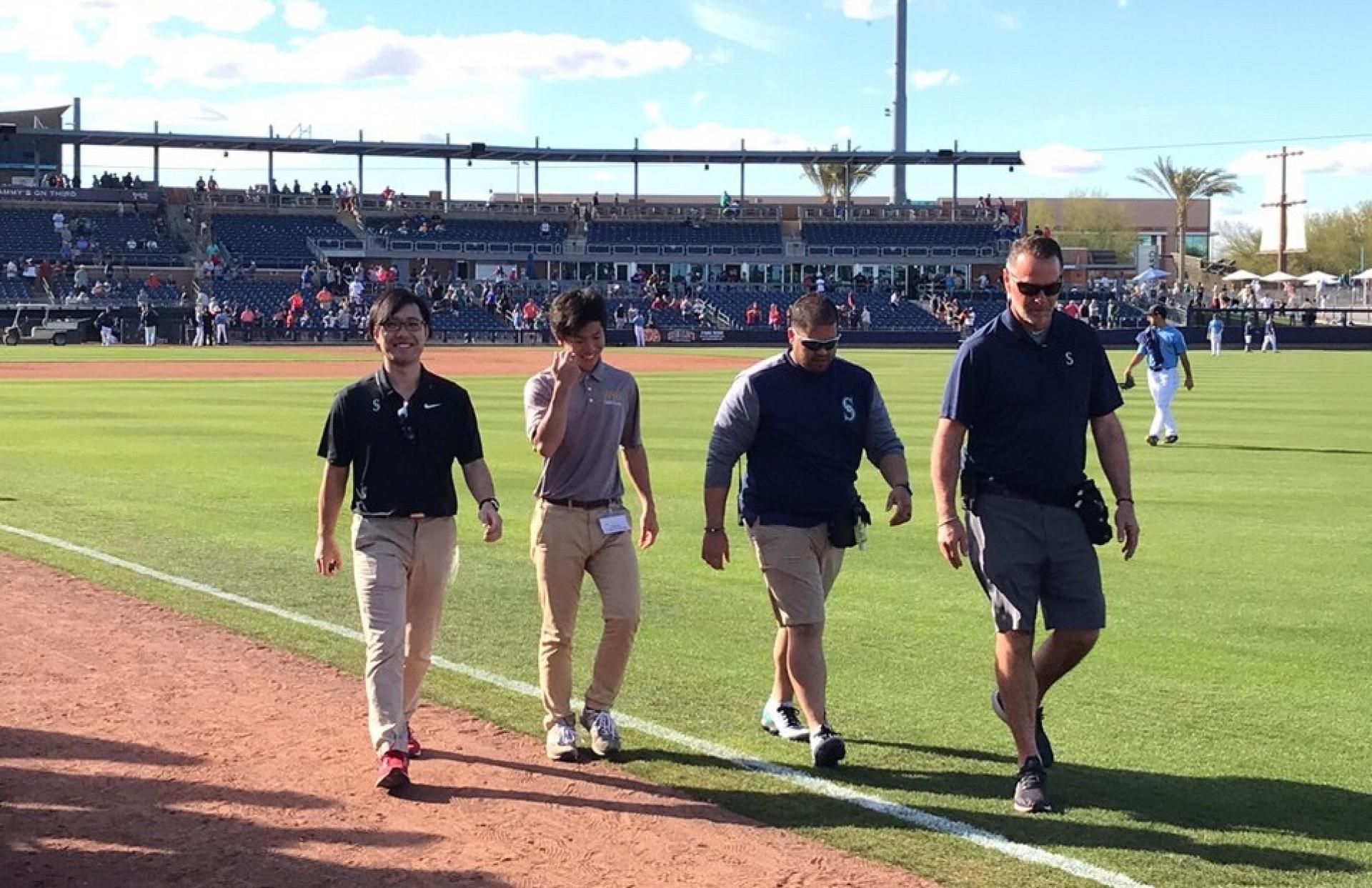Do you have a favorite baseball team?
I'm a huge baseball fan, especially Nippon Professional Baseball (NPB)! I check the NPB game results and watch highlights during my everyday routine. My favorite team? That's a good question—my favorite team in NPB is definitely my local team, the Orix Buffaloes. I honestly don't have any favorite teams in MLB yet. I really want to go to a Chicago Cubs game though.
What are some of your favorite moments from the internship?
One of my favorite memories was when I accidentally caught a sharp foul ball barehanded during a game. Aside from that, it was such a great opportunity to make connections not only with the staff of the Mariners but also with the other participants in the internship program. Some of them are athletic training students from other colleges or universities in the United States, and some of them are students and physical therapists who came all the way from Japan for this internship. We had endless conversations every night during dinner sharing industry information and techniques.
Did you meet any baseball players that you admire?
I met Ichiro Suzuki, Japanese baseball legend who accumulated 4,257 hits throughout his career—setting a record across all professional leagues in baseball history. He played for 20 years, and I was happy to see him again before he retired at the end of this spring training during an exhibition game in Japan. I have respect for how he embraces many challenges and hardships.
How do you see this clinical experience helping you with your future career goals?
My goal is to cultivate skills of inspection, palpation and master manual therapy. A picture was worth a thousand words: seeing athletic training in a professional setting through this internship helped determine my specialty.
Due to the National Athletic Trainers’ Association and the Commission on Athletic Training Education’s decision to elevate the professional degree of athletic training to the master’s level, North Central is no longer accepting students into the undergraduate athletic training program. Students interested in pursuing the Master of Athletic Training degree should contact Dr. Kendall Selsky, Program Director for Athletic Training at klselsky@noctrl.edu for more information.



